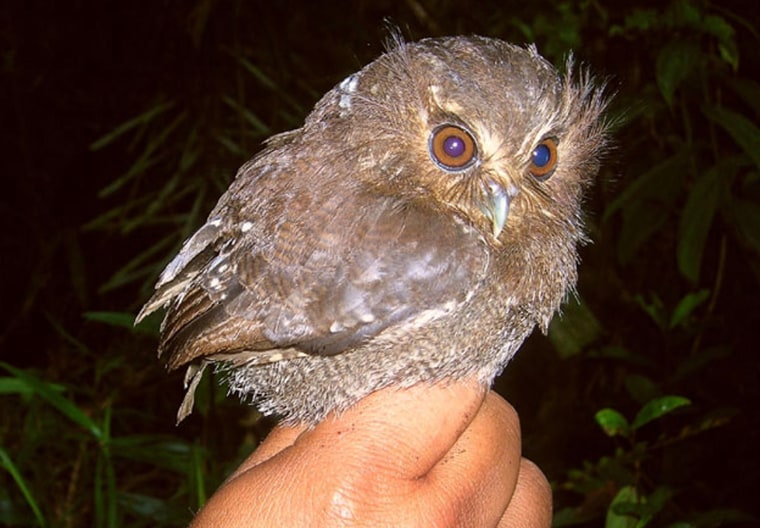An extremely rare species of tiny owl has been seen in the wild for the first time, the American Bird Conservancy said Thursday. The long-whiskered owlet, one of the world's smallest owls, was discovered in 1976. Researchers have caught a few specimens in nets after dark but had not seen it in nature.
It was spotted in the wild in February by researchers monitoring a private conservation area in Peru's northern jungle.
The conservancy said in a news release that investigators encountered the owlet three times during daylight hours and recorded its calls frequently at night. The group said the sighting "is considered a holy grail of South American ornithology."
The owl is so distinct that it has been named in its own genus, "Xenoglaux," meaning "strange owl," due to the long wispy feathers around its reddish-orange eyes.
The owl inhabits the dense undergrowth of highland forests in a remote region of Peru.
"Seeing the long-whiskered owlet is a huge thrill," said David Geale of the Association of Andean Ecosystems, who was a member of the research team. "Its population is estimated to be less than 1,000 birds and possibly as few as 250."
He said the species is threatened by the rapid destruction of its forest habitat and its small range.
The researchers captured a bird in a mist-net and later released it onto a tree branch, where it was photographed before disappearing into the night. Photos provided by the conservancy show a bright-eyed bird not much bigger than the fist of the person holding it.
